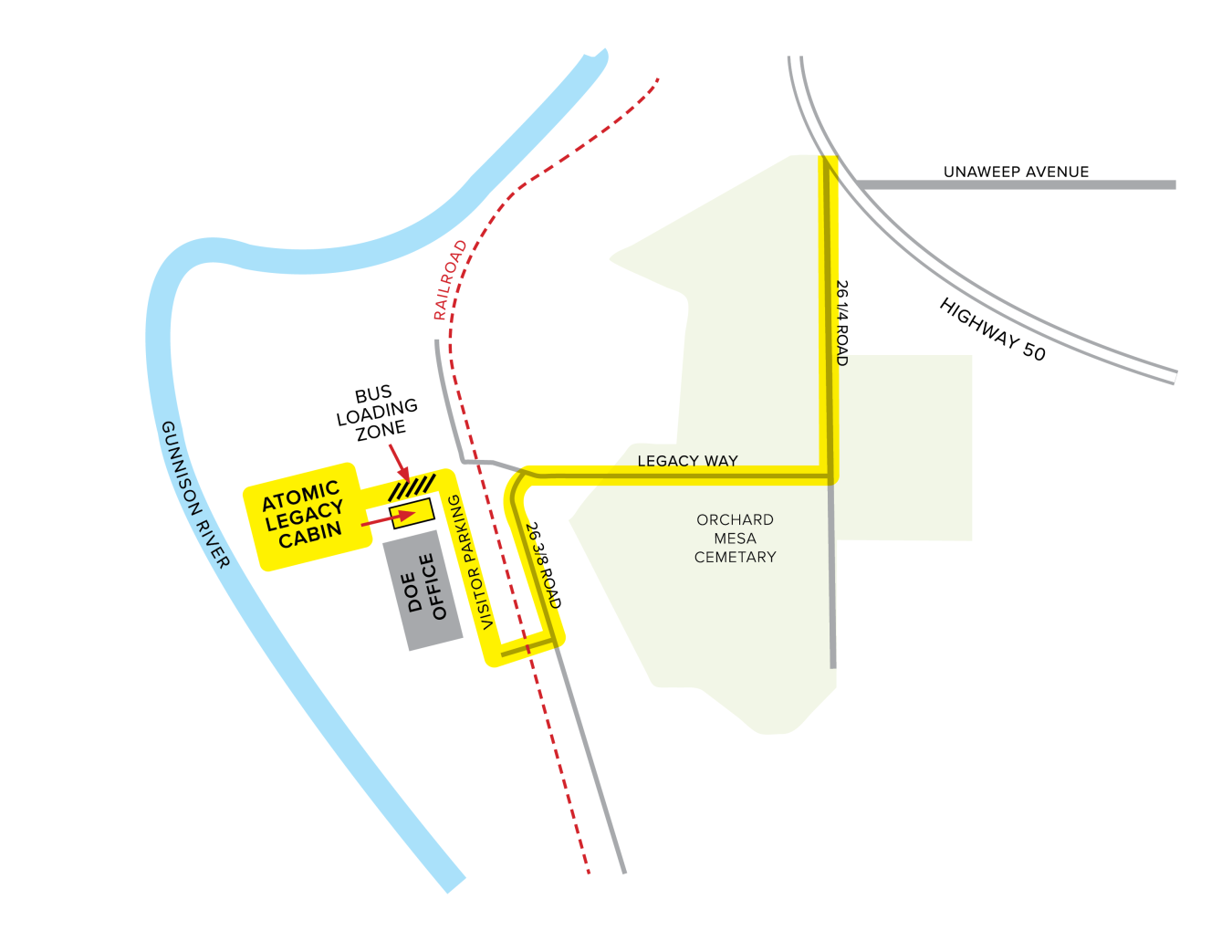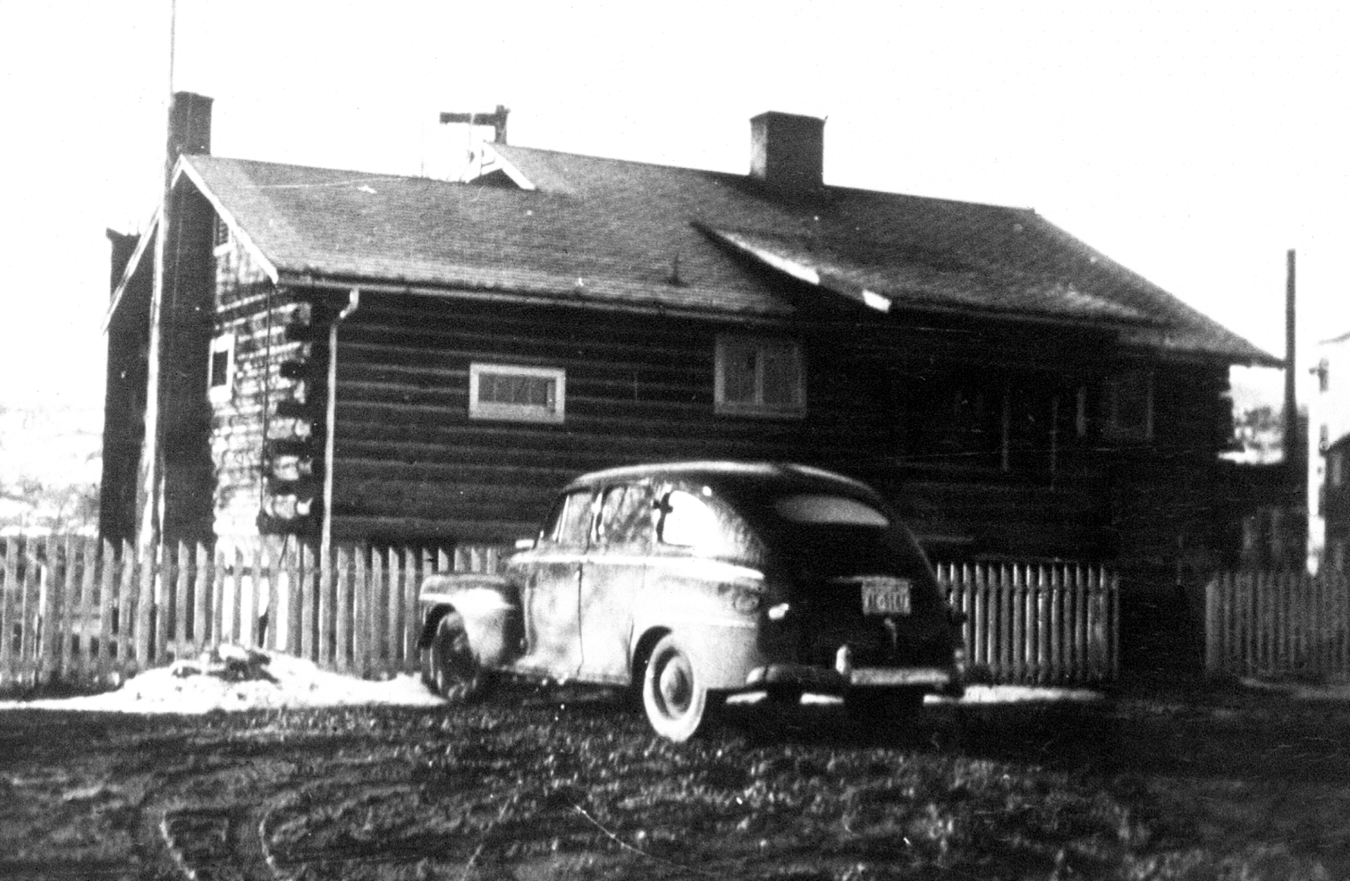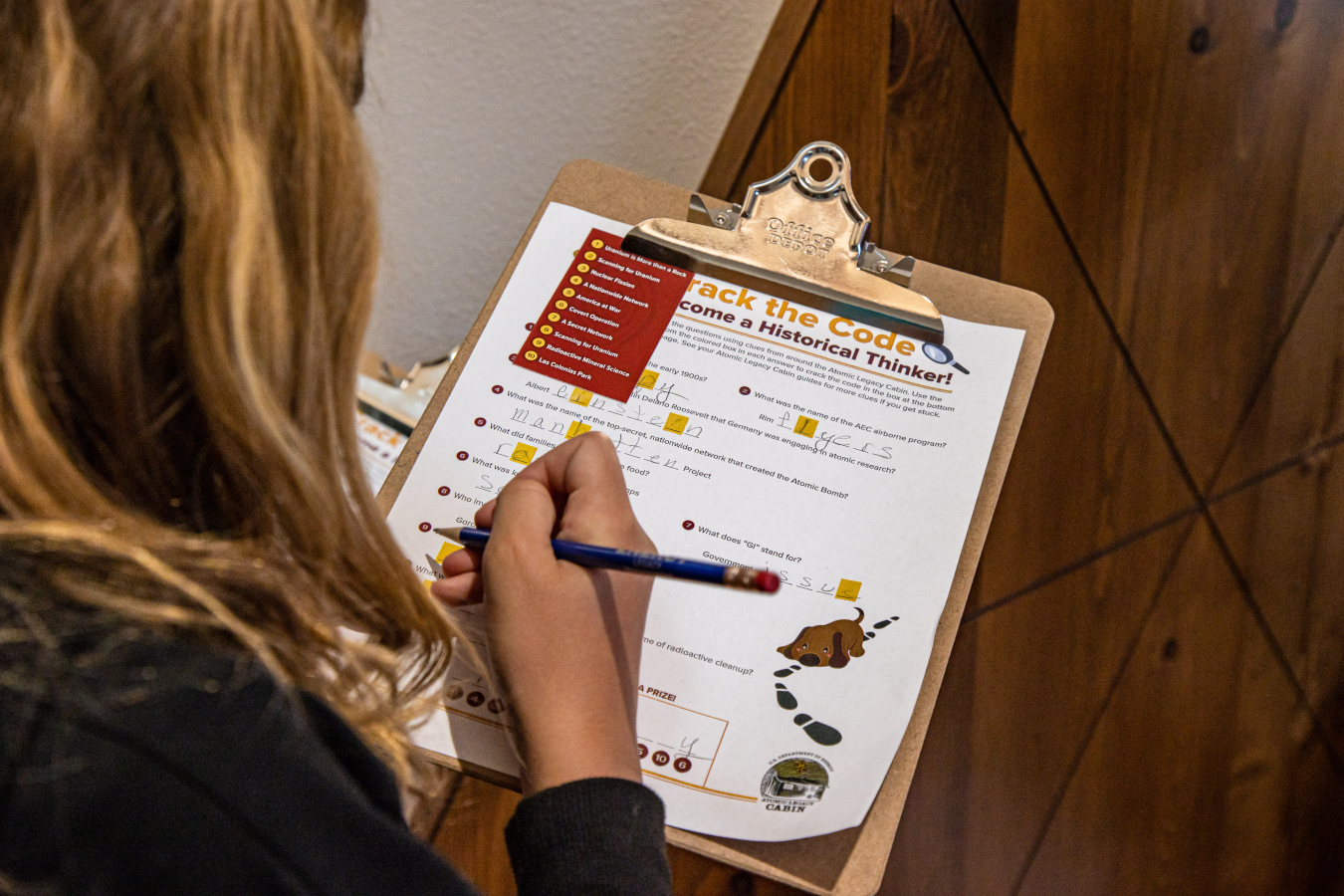The Atomic Legacy Cabin offers a look into the unique historical and scientific legacy of the Colorado Plateau through a variety of history and science, technology, engineering, and math (STEM) programs. All field trips and programs are provided at no cost by the U.S. Department of Energy Office of Legacy Management.
All programs will be confirmed by staff prior to the scheduled date. Submit your request by email at [email protected], or by phone, (970) 248-6251.
- Groups must provide their own transportation to and from the interpretive center.
- Groups will be limited to no more than 40 indoors due to fire code capacity.
Consecutive days may be scheduled to accommodate larger groups. - Groups larger than 40 may be accommodated through use of indoor and outdoor space, weather permitting. Groups will be split into two or three smaller groups to rotate through each activity.
The Atomic Legacy Cabin is at 2597 Legacy Way behind the Orchard Mesa Municipal Cemetery on 26 1/4 Road and U.S. Highway 50.

- Interpretive staff will travel to your location and provide program materials at no cost.
- When preparing your program request, please indicate your group’s ability to provide a projector and/or computer.
- With access to a variety of STEM professionals, we can create a program or schedule a guest speaker to accommodate any type of educational event including (but not limited to):
- Problem-based learning classes
- Career fairs
- STEM events
- Boy Scouts and Girl Scouts
- Public and private schools
- Universities
- High school and college level programs pending availability of subject-matter-experts
Call us to find out how we can best support your event to fit your curriculum
Programs Grade Level Available as
OutreachPre-K K 1 2 3 4 5 MS HS History of Uranium on
the Colorado Plateau■ ■ ■ ■ Create Your Own Cabin ■ ■ ■ ■ Become a Historical Thinker ■ ■ ■ Energize the Yo-Yo ■ ■ ■ ■ Newton’s Balloons ■ ■ ■ ■ ■ Geology Rocks ■ ■ ■ ■ ■ Groundwater:
Go With the Flow■ ■ ■ ■ Plants and Pollinators ■ ■ ■ ■ ■ States of Matter ■ ■ ■ ■ Radiation 101 ■ ■ ■
FIELD TRIPS AND OUTREACH PROGRAMS
Grades: 5, MS–HS
Key content: Manhattan Project, Cold War, uranium mining and milling
Available as outreach: Yes
Learn about the legacy of uranium in Grand Junction and on the Colorado Plateau during the Manhattan Project and Cold War eras. Atomic Legacy Cabin historic photo.
Atomic Legacy Cabin historic photo.Grades: Preschool, K–1
Key content: Uranium mining, prospectors, geologists, and Geiger counters (radiation detector devices)
Available as outreach: Yes
This program engages young minds through an interesting lesson and hands-on activity that enrich early childhood knowledge in engineering and color and shape recognition, as well as fine motor-skill development as they use their creativity to make a 2D log cabin while learning about the story behind the Atomic Legacy Cabin.
Grades: 4–5, MS
Key content: Manhattan Project, Cold War, uranium mining and milling
Available as outreach: No
Ever wonder how historians study the past? In this program, conducted in the Atomic Legacy Cabin, students will think like historians as they look for clues to crack the code of the past.

Grades: 4–5, MS
Key content: Physical science, kinetic and potential energy, types of energy, and gravity
NGSS: Energy (4-PS3-2, 4-PS3-4, MS-PS3-1, MS-PS3-2, MS-PS3-5)
Available as outreach: Yes
What do yo-yos have to do with energy? In this program, students will each receive their own yo-yo to learn about different types of energy and how it can be converted from one form to another.
Grades: 3–5, MS
Key content: Physical science, Isaac Newton, gravity, motion, force, velocity, and mass
NGSS: Motion and Stability: Forces and Interactions (3-PS2-1, 3-PS2-2, MS-PS2-1, MS-PS2-2)
Available as outreach: Yes
Motion plays an active role in everyday life. In this program, students will learn about Newton’s three laws of motion and observe these laws in action as they race their own balloon-powered rockets.
Grades: 2–5
Key content: Geology, igneous, metamorphic, sedimentary, rock cycle, and Colorado Plateau
NGSS: Earth’s Materials and Systems (2-ESS1-1, 4-ESS1-1, 4-ESS2-1, 4-ESS2-2, 5-ESS2-1)
Available as outreach: Yes
Our planet’s landscape is constantly changing — eroding and forming beneath our feet. Observing different types of rocks from the Colorado Plateau, students will identify comparisons and contrasts in their compositions. Students will also explore the rock cycle, rock uses, and perform hands-on tests to determine rock types and identify unique characteristics, just like geologists!
Grades: 5, MS–HS
Key content: Environmental science, groundwater, aquifer, pollution
NGSS: Earth’s Materials and Systems (5-ESS2-2, MS-ESS2-4, HS-ESS2-5)
Available as outreach: Yes
Groundwater is a vital source of water in the earth and is constantly flowing under our feet through soil and bedrock. Through a hands-on activity creating their own aquifer in a cup, students will learn about the importance of groundwater and demonstrate how human actions and natural events can potentially cause underground contamination.
Grades: 2–5
Key content: Environmental and life sciences, native and invasive species, and pollinators
NGSS: Ecosystems: Interactions, Energy, and Dynamics (2-LS2-2, 5-LS2-1)
Available as outreach: Yes
Why are plants and pollinators important to the ecosystem? Students will explore the answer to this question and learn about the difference between native and invasive species as they make their own native plant seed ball to attract pollinators.
Grades: 2–5
Key content: Physical science, atoms, molecules, states of matter, volume, solutions, and viscosity
NGSS: Matter and Its Interactions (2-PS1-1, 2-PS1-3, 2-PS1-4, 5-PS1-1, 5-PS1-2, 5-PS1-3, 5-PS1-4)
Available as outreach: No
States of matter ... matter! Chemists, engineers, and environmental scientists all need to understand how molecules are arranged, how they behave, change, and combine. Learn the physical properties of solids, liquids, and gases during this exciting, hands-on scientific exploration.

Grades: MS–HS
Key content: Radiation, ionizing and nonionizing, alpha, beta, neutron, gamma, time, distance, and shielding
NGSS: Waves and Their Applications in Technologies for Information Transfer (MS-PS4-2, HS-PS1-8, HS-PS4-3, HS-PS4-4)
Available as outreach: Yes
Radiation is all around us, all the time, from natural and human-made sources. Students will learn what radiation is, the difference between ionizing and nonionizing radiation, and the different types of radiation by safely exploring everyday items and examples of radiation.

